Are you finding it difficult to choose between a jigsaw and a bandsaw? You need not worry, many people get confused when it comes to making such a decision. And the availability of a variety of these tools doesn't help the matter.
In this review, we are going to show you the differences and similarities between these two tools to help you make an informed decision.
We have found out that one best fits the artisan who changes workstations often, and the other best serves the one who works in a fixed workshop most of the time.
Read on to learn more about this discovery.
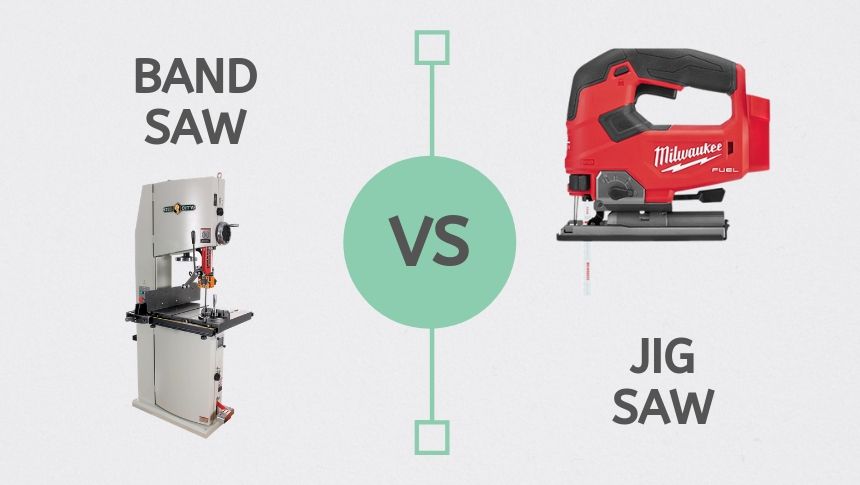
Photo credit: smalldesignideas.com
Jigsaw vs Bandsaw
Before we go into the in-depth review of jigsaws and bandsaws, let's look at their most prominent pros and cons.
Jigsaw | Bandsaw |
|---|---|
Pros | Pros |
Cons | Cons |
Best for | Best for |
General cutting works by DIYers and hobbyists | Heavy work like in construction projects. Suitable for professional artisans for commercial use |
What is a Jigsaw and How Does it Work?
A jigsaw is a power saw that cuts angular, irregular, and straight cuts. uses an electric motor that allows it to cut angles as small as 45 degrees with accuracy.
The motor drives the jigsaw blade in an up-and-down motion. A jigsaw can cut through many materials, such as wood, plastic, metals, concrete, ceramic tiles, among others, by riding on the surface of the object being cut.
Jigsaws weigh between 10 and 40 lbs, making them lightweight, efficient, and versatile. One of the greatest advantages of jigsaws is that they are very convenient to handle and easy to operate.
You can use a jigsaw to cut a material's interior without touching its outer edges. Most carpenters and woodworkers use it when they want to cut pieces of wood faster and accurately.
The most important consideration when using a jigsaw is to choose the right blade. Jigsaw blades differ and the one you choose will depend on tooth configurations and the material you want to work on, its length, and thickness. For example, wide blades are great for making long straight cuts, while thin blades work well for cutting curves.
The two types of jigsaws are the cordless and the corded models. When you want to work away from the power source, the cordless jigsaw will serve you better. It is extremely safe to use a jigsaw, and it is one of the most important tools for DIYers.
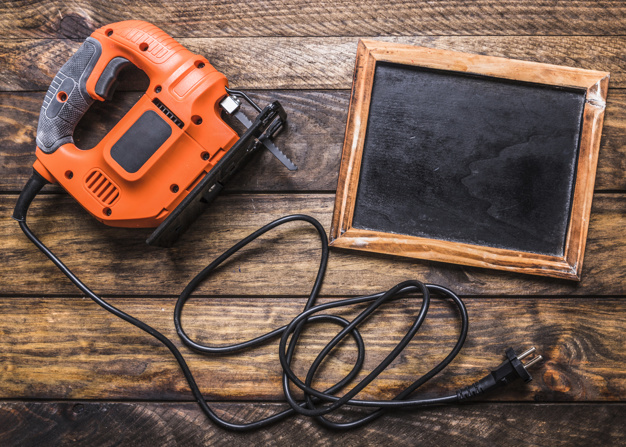
Jigsaw Cuts
Since jigsaws cut by riding on the surface of the object, they are suitable for inside cuts, circular, and curved cuts. They can cut depths of between ⅜ to 6 inches depending on the material.
Jigsaws are also a good option for both long and short straight cuts.
What is a Bandsaw and How Does it Work?
Unlike the jigsaw, a bandsaw uses a continuous blade, driven by two wheels, one below and one above the cutting table. Bandsaws are very strong and can cut through thick materials. Some have four wheels.
Bandsaws use larger and thicker blades than those used on jigsaws, making them great for resawing. But that doesn’t mean you can't use them for other purposes.
Most woodworkers like bandsaws because they can make repetitive cuts quickly and make both curved and straight cuts.
Bandsaws vary in weight, depending on the brand, and are also driven by electric motors. DIYers, hobbyists, contractors, woodworkers, and metalworkers use bandsaws.
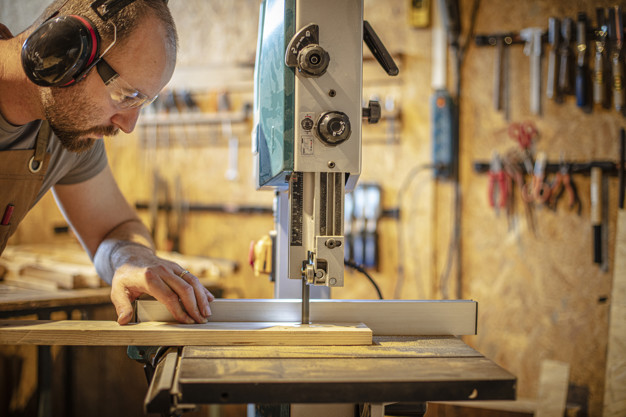
Bandsaws are quite versatile and are powerful enough to cut through materials thicker than two inches. However, the thickness of the material it cuts depends on the room or space between its top blade point and the working table.
Bandsaws have different tooth styles and widths, which allows variations in the cuts they make. They are ideal tools for planter boxes, trims, shelves, and furniture making.
If you usually work on materials thicker than two inches, a bandsaw is the best tool for you, which is also the case if your work involves making many curved cuts.
Just make sure you get the right brand of bandsaw for your project. We have benchtop units, floor-standing units, and handheld/portable bandsaws.
Bandsaw Cuts
Bandsaws are best suited for outside cuts because the blade runs in a continuous circulatory manner and cannot be lifted to place in the center of a workpiece for the inside cut option.
Bandsaws are also suitable for straight cuts, with no upper limit on the cut length because they have an open rear. They also make curved cuts, but with less finesse.
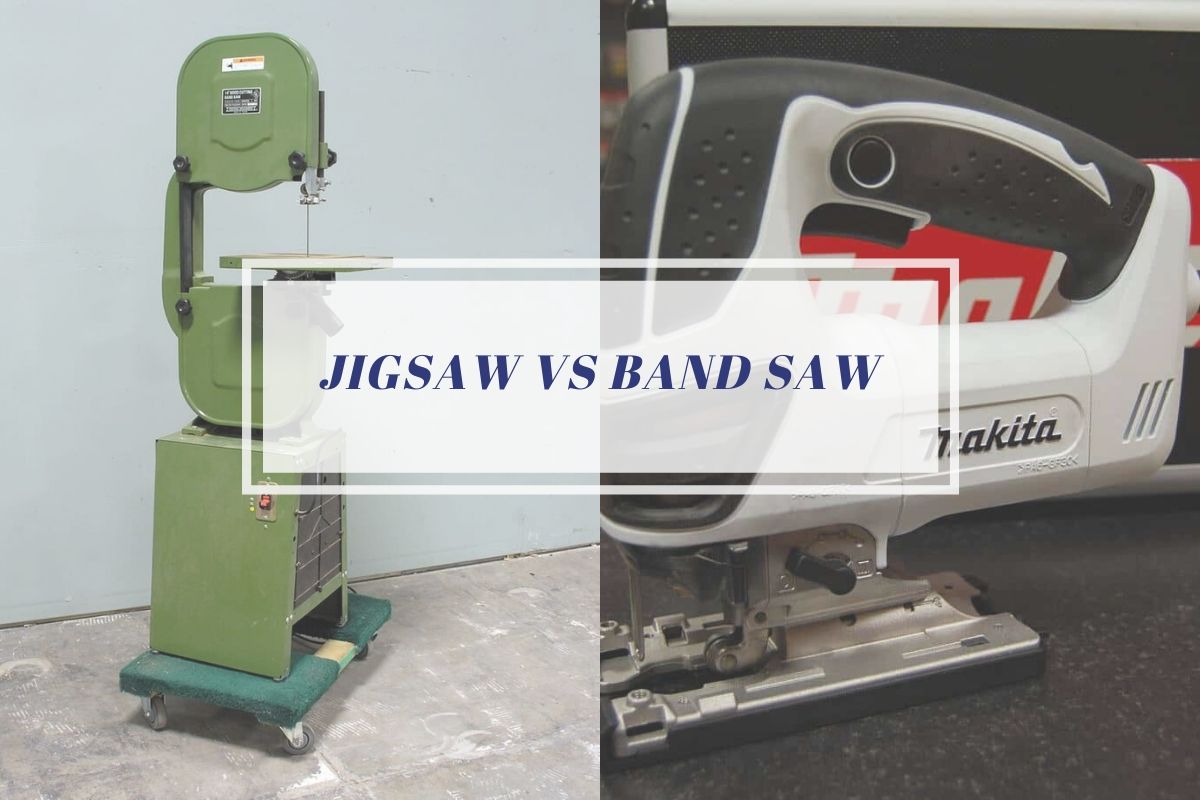
Photo credit: toolsever.com
Relevant Characteristics Between Jigsaw and Bandsaw
The table below shows a summary of the comparison between jigsaws and bandsaws.
Jigsaw | Bandsaw | ||
|---|---|---|---|
 | Cell |  | |
Mainly inside Cuts | Cutting System | Mainly Outside Cuts | |
8-13-¾ inches long 10-40 pounds | Size and Weight | 9-24 inches Varies by model- 50-200+ pounds | |
Reciprocating blade 1 attachment point | Blade Type and Attachment Point | Continuous circulatory motion blade Multiple attachment points | |
400-900 watts | Power | 700-1200 watts | |
Personal to small-scale usage | Scale of Use | Commercial to industrial use | |
On/off power switch Has blade guards for safety Personal protective equipment and self-awareness | Safety | Has blade guards for safety On/off power switch Personal protective equipment and self-awareness | |
Similarities and Differences
If you have to choose between a jigsaw and a bandsaw, you can easily get confused because these saws have different features that make them suitable for particular applications.
Understanding the differences between them can help you make an informed decision. So, here’s a comprehensive comparison of jigsaws and bandsaws.
Jigsaw and Bandsaw Differences
Cutting System
By design, a jigsaw can make narrow, intricate cuts that a bandsaw cannot make. Bandsaws make broader cuts because their blades are thicker than those of jigsaws.
Jigsaws can also make curved cuts, making them more suitable for general and finesse cutting projects where precision is a concern.
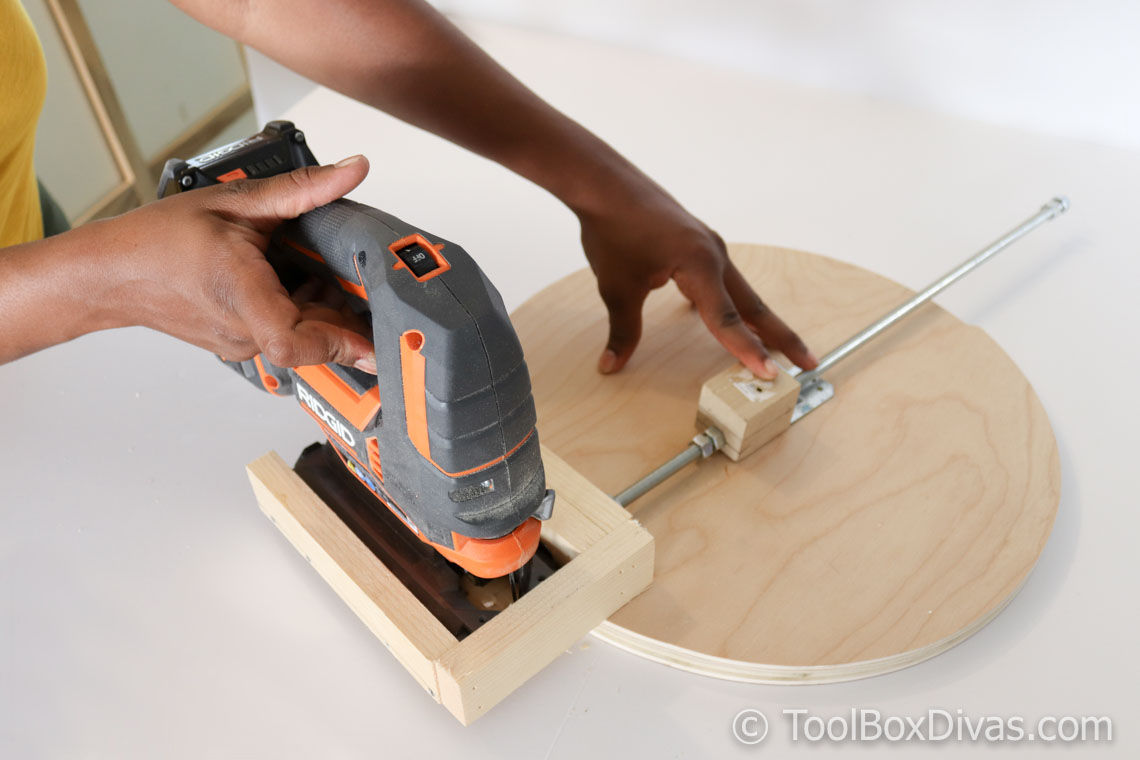
Photo credit: toolboxdivas.com
Bandsaws are more suitable for the general aggressive cutting of large pieces of materials. That's why many woodworkers prefer them for resawing.
Cutting Capacity
Bandsaws reign supreme on cutting capacity. While you can use a jigsaw to make a reasonably deep cut up to 6 inches, a bandsaw can go deeper, up to 10 inches.
Jigsaws can't make deeper cuts because their reciprocating design and blade length limits them. If you want to make really deep cuts, a bandsaw will do a better job.
Size and Weight
Size and weight are where bandsaws and jigsaws differ most. Jigsaws are compact handheld cutting tools with modest weights, while bandsaws are generally bulky in size and weigh more.
Only a few bandsaws are handheld power tools. Benchtop and floor-standing bandsaws are for use on tabletops, and you must secure them in position, making them less portable than jigsaws.
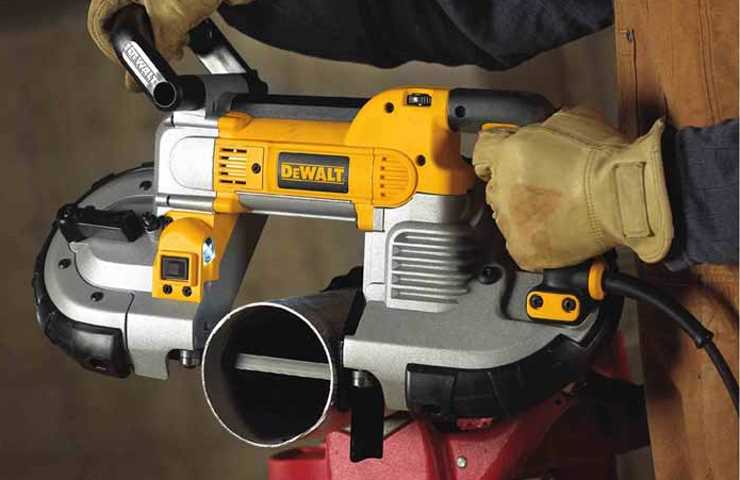
Photo credit: toolshaven.com
Blade Type and Attachment Point
Bandsaws and jigsaws use different blades. Jigsaw blades are straight and mounted at single points in the tools. On the other hand, bandsaws utilize band-style blades mounted at several points within the tools.
While the jigsaw blades move up and down, the bandsaw blades move around two or four wheels. Bandsaws don’t produce as much heat as jigsaws, making them more durable.
Power
Jigsaws have varying motor powers. That's why when buying a jigsaw, pay much attention to its amperage. They operate in the amperage range of between three to seven amps.
For many basic tasks and DIY projects, the 3-amp jigsaw will suffice. But if you have a more complicated task, you can choose one with a higher amperage rating.
Just like jigsaws, bandsaws also come with different power ratings. For simple tasks, bandsaws rated 0.5-1 HP will suffice. But if you have to cut through long and thick pieces of wood, you’ll need bandsaws rated 2 HP or higher.

Scale and Use
Jigsaws are better for small-scale jobs that require cutting pieces of wood that aren't so thick. Compared to bandsaws, they are more flexible when you want to cut curves through wood with normal width.
When you want to cut thicker planks of wood, bandsaws would be your best bet. They can cut through thick planks of wood faster and more efficiently than jigsaws, making them more suitable for bigger and more involving jobs.
Safety
Both bandsaws and jigsaws are safe to use, provided you use them correctly. However, bandsaws are more dangerous compared to jigsaws. The material has to be pushed through it, putting the hands of the user at risk. Nonetheless, you must take precautions when using the two tools.
Jigsaw and Bandsaw Similarities
Even though jigsaws and bandsaws are for different uses, they share certain similarities, especially in their use. That’s why you may find certain applications in which you can use either of the two tools
Straight Cuts
Both jigsaws and bandsaws can make straight cuts. But if you want to make the cuts faster, you can opt for a lighter tool, like a jigsaw. Again, if you want to make a straight cut in a thicker material, you can choose a bandsaw.
Bandsaws have a fence that guides the material being cut hence offer straighter cuts.
Curved Cuts
Both jigsaws and bandsaws can cut curved corners. Getting a better result will depend on how you are comfortable and experienced using either of the tools.
The accuracy of the cuts will also depend on the blades that you choose. Bandsaws will make aggressive curved cuts with rough edges that require sanding. Jigsaws with thinner blades result in smoother curved cuts.
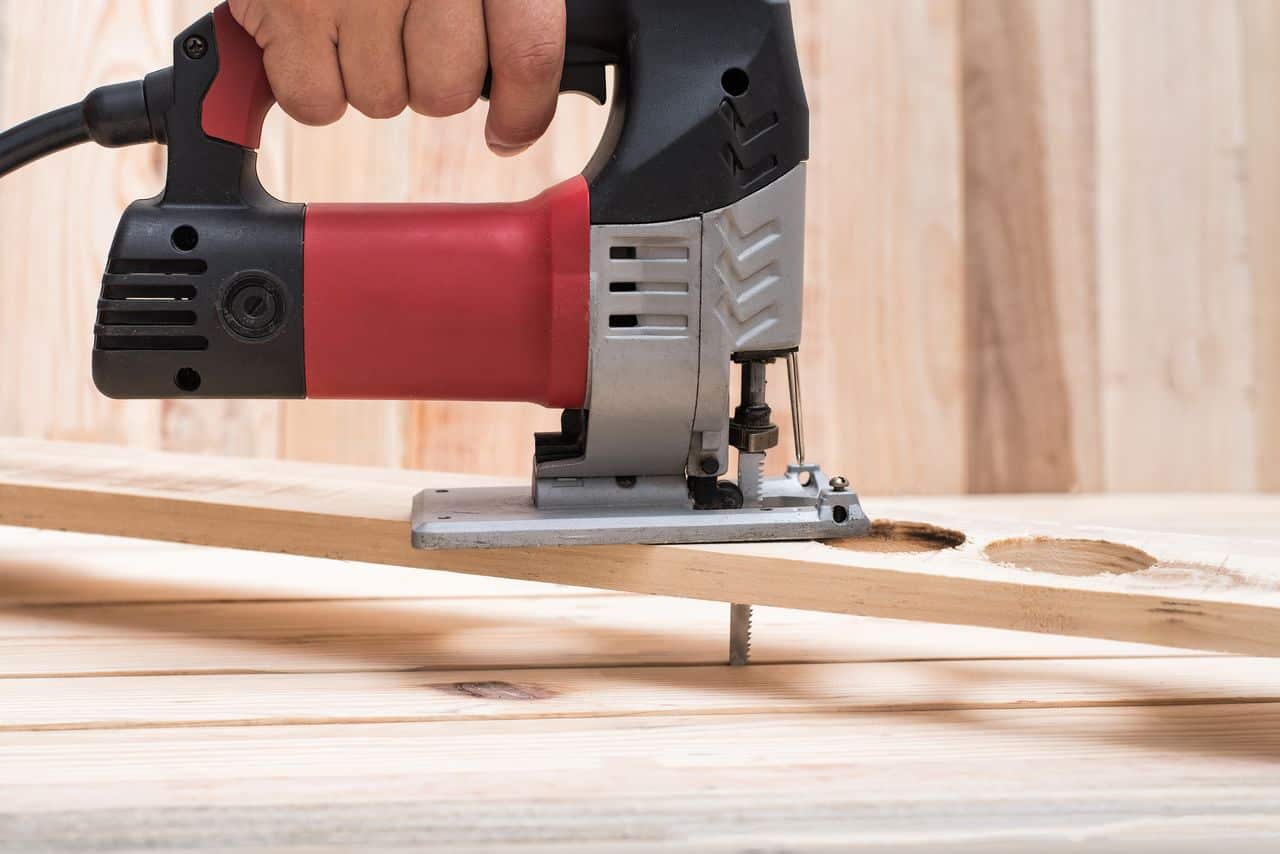
Photo credit: thediyhammer.com
Variety of Materials
Both bandsaws and jigsaws can use different types of blades, allowing them to cut through many materials.
Both of them use thin, tall blades to make cuts through materials. They can cut through wood, metal, concrete, plastic, among others. Jigsaws are better suited for cutting through delicate items like ceramic tiles to reduce breakages and wastage.
Advantages of a Jigsaw
Knowing the advantages of jigsaws will help you decide whether they are the best options for you. Here are the top four advantages of jigsaws.
Comfort and Safety
Jigsaws are efficient when it comes to energy consumption when you use them to cut through boards. They are comfortable to hold and operate, making them easy to handle even by beginners.
A jigsaw will rest on the material you are cutting, meaning you won't have to exert yourself to hold the material in place. It has guards that protect the hands and fingers from the blade. It is also easy to change their blades.
While using cordless jigsaws, you'll not have to worry about the cords prone to causing accidents in workshops.
Cuts a Variety of Materials
Jigsaws not only cut through woods but can also cut through drywall, fiberglass, tiles, and steel, making them a vital asset in your workshop. It can cut through pieces of wood of varying density and thickness up to 6 inches deep.
Efficiency in Cutting
Jigsaw designers value efficiency. This tool cuts intricate curvy shapes with ease. Jigsaws will come in handy even where you want to make some bevel cuts. Its efficiency in making curved cuts makes it a favorite tool for creating fancy wooden products.
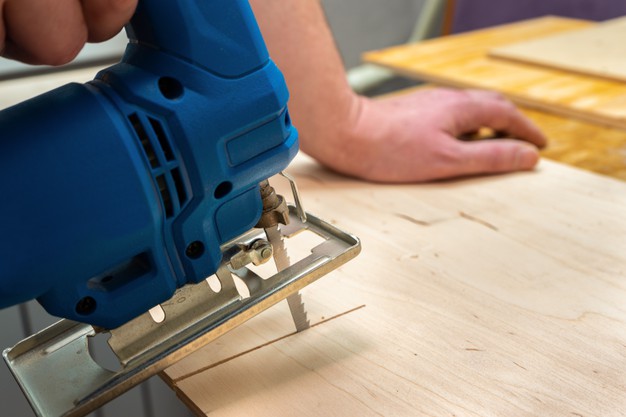
Portability
If you have to work far from your workshop or in the field where there’s no power supply, a cordless jigsaw will come in handy. Just ensure you’ve packed enough batteries, so you don’t run out of power in the middle of your project.
It’s also worth remembering that jigsaws are light, handheld power tools that are easy to carry when moving from one place to another.
Advantages of a Bandsaw
The top four benefits of bandsaws that can help you decide whether these tools are the best option for you include:
Versatility
Bandsaws are quite convenient to use in industrial and commercial workshop setups. Once you tip their blades, they can handle most workshop cutting operations. In an industrial setup, you probably would want a tool that’s effective and easy to maintain.
If you are a seasoned user, you’ll find this tool easy to operate, especially if you maintain your blades well. Bandsaws are excellent for handling repetitive works. They can greatly increase your productivity.

Can Cut Through a Variety of Materials
As mentioned earlier, bandsaws can cut through thick pieces of wood. But that’s not the only thing they can do. Bandsaws can cut through plastics, metals, and rubber, just to mention a few. All you need to do is choose the right blade, and you’re good to go.
Accuracy
With bandsaws, your cutting will be more controlled and precise. These tools produce more qualitative and predictable results because they have some innovative features such as a miter gauge and rip fence to help guide the cuts.
Because they can make accurate cutting, they are the most suitable for use in industries where accuracy matters.
Smaller Kerf
Bandsaws have smaller kerfs than many other cutting tools, which makes them reduce wastage. Tools with wider blades eat too much material resulting in a lot of wastage. The results you'll get from a bandsaw will be better than that you get when using other tools like chainsaws.
What About a Scroll Saw?
Scroll saws are also power tools powered by motors. They come in handy if you want to cut intricate curves on a variety of materials, including wood, plastic, and metals.
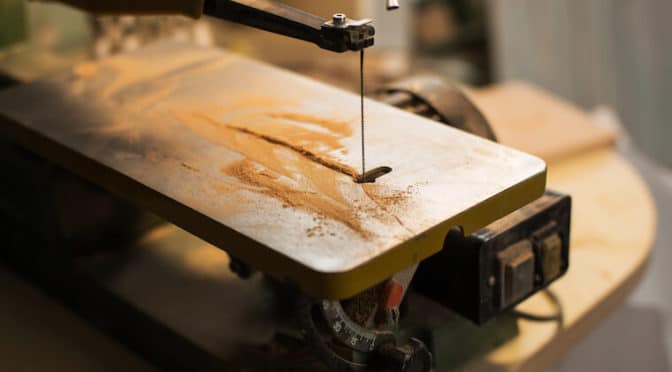
Photo credit: planethometools.com
A scroll saw has a narrow blade that's vertically mounted to allow it to move up and down. It cuts through materials in the downward stroke. Scroll saws do not weigh much but are firm and robust enough to make delicate cuts through materials.
If you are a woodworker who requires precision and efficiency in all cuts, this tool is for you. Since it’s lightweight and easy to operate, it means even beginners and DIYers can benefit from it. You can choose a cordless or corded model depending on where you want to work.
Scroll saws are specialty saws with a wide range of applications. However, they stand out where intricate cuts and cleanliness are required, and that explains why many people prefer to use them to create finesse objects like jigsaw puzzles.
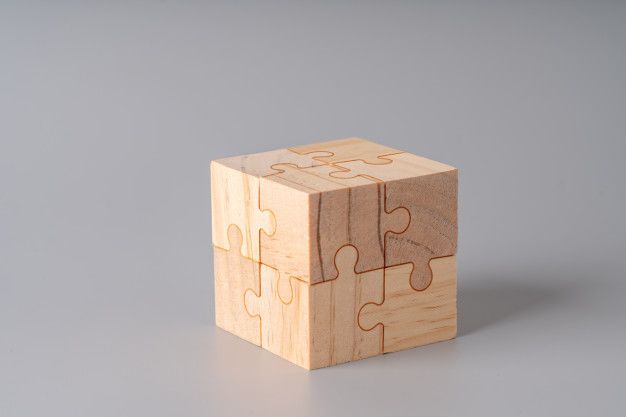
You can also use scroll saws to cut wooden names, numbers, letters, and plaques bearing detailed silhouettes and animals. They work well when cutting materials less than one inch thick.
Scroll saws have a thin kerf, which reduces the wastage of materials while at the same time allowing the cut pieces to fit well when placed back.
The greatest advantage of scroll saws is that you can use them to cut the middle of the material without interfering with the edges, meaning you can use them to create complex artwork from wood, like portraits and landscapes.
The only downside of these saws is that they can't cut through materials thicker than 2 inches or extra heavy pieces of wood and other materials. Scroll saws aren't good at cutting straight lines because they tend to wander or swerve.
What About a Reciprocating Saw?
As a seasoned woodworker, you may decide to expand your horizons beyond jigsaws and bandsaws if your work demands the use of a completely different power tool. A reciprocating saw is one of the tools you can consider.
Reciprocating saws will come in handy where crowbar and hammers fail. Basically, they are demolition tools that can be used to rip and cut material around windows and doors when replacing them.
You can use reciprocating saws to cut through plasterboard and joints or any old fittings when demolishing a structure.
They utilize many blades that help them cut through plasterboard, metal, wood, and other materials. When you choose the right blade, the tool will help you make clean cuts very quickly.
The blades of a reciprocating saw move back and forth, more or less like that of a jigsaw, explaining why some woodworkers use jigsaw blades in reciprocating saws and vice versa.
The blade fixing mechanism of the two saws is almost similar. Some reciprocating saws have LED lights that can help you work in dark areas. This feature is also on some jigsaws.

Photo credit: allaboutsaws.com
Unlike many power cutting tools, reciprocating saws don't have flat bases but adjustable feet, making them suitable for those who work in inconvenient and awkward places.
These saws come with rubberized boots offering a firm grip, giving the user firm control when cutting through materials. This also helps reduce the vibration of the arms or hands while cutting.
When and Why Would I Use a Jigsaw?
Jigsaws are mainly used to cut out stencils or holes and other curved woodwork. They are the best for this kind of work, making it a necessary tool in your workshop. Some of its applications include:
Making Countertops
If you want to install a countertop with intricate curves, a jigsaw will come in handy. It will help you make cuts where you can fit sprayer hoses, faucets, and other things that require round holes.
Cutting Wood
Cutting through wood is the most common use of jigsaws. It can cut wood of various thicknesses ranging from plywood to thick planks of wood, explaining why it is an important tool on construction sites where timber of different sizes needs cutting.
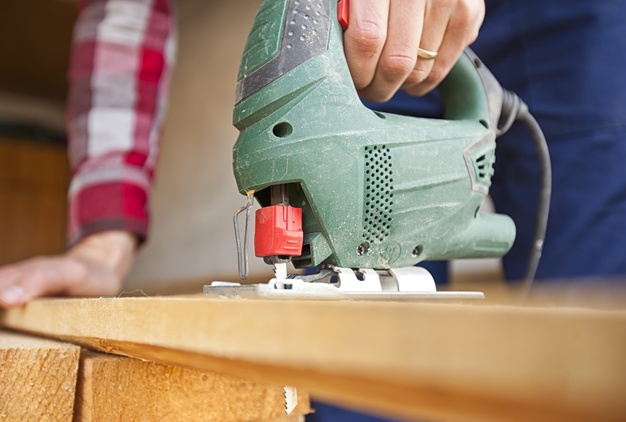
Cutting Ceramic Tiles
Jigsaws are great for cutting through ceramic tiles. For example, if you want to cut a curve or a semicircle in a tile to fit your pipes, a jigsaw can do it. Not only that, but a jigsaw can also cut through carpets and concrete. It can make curved, straight, plunge, and bevel cuts.
When Would a Jigsaw NOT Be the Best Choice?
Jigsaws are versatile tools when it comes to cutting curves. However, when you want to cut through thick woodblocks, then they may not serve you well, especially when you want to make very long cuts.
Jigsaws use narrow blades, which makes them unsuitable for thick cuts beyond 6 inches. Also, these tools aren't good for resawing. If you want to split wood into thinner pieces, you have to look elsewhere. Jigsaws are less powerful when compared to bandsaws.
When and Why Would I Use a Bandsaw?
Bandsaws are powerful tools that can allow you to cut through a variety of materials with much precision. They have blade guides and miter gauges that help with accuracy. For this reason, you can use them in the following ways.
Cutting Straight Lines
Any woodworker would want to make straight cuts once in a while. A bandsaw can help you with that. They are easy to maneuver and manipulate, which makes them suitable for making straight cuts.
Even if your hands are a little shaky, bandsaws come with fences that will help you guide the piece you are working on so you can get an accurate cut.
Resawing
Resawing capability is one of the main reasons why woodworkers like bandsaws. As had been explained earlier, resawing timber is important when working with expensive timber. It can help you to reduce costs. Resawing helps you produce more with little resources.

Making Relief Cuts
The fact that bandsaws can make relief cuts makes them indispensable assets in your workshop. Relief cuts are important when making decorations because they can help you cut curves where there are sharp turns.
When Would a Bandsaw NOT Be the Best Choice?
Even though bandsaws are very important tools in any workshop, they have some shortcomings. Bandsaws will not finish a product the way jigsaws do. They often leave rough edges, which may force you to undertake additional finishing like sanding.
Again, though they are versatile with materials, bandsaws are not suitable for delicate materials like ceramic tiles, for which a jigsaw comes in handy.
Bottom Line
As we have seen, jigsaws and bandsaws aren't the same, though they share some functionalities. Both these power tools are important for specific uses. When you are a DIYer or have small general cutting projects, jigsaws are the best option for you.
Jigsaws are lightweight, versatile, and portable. But if you want to cut through thicker materials, we would advise that you pick a bandsaw. Bandsaws are more powerful and cut deeper than jigsaws.
If you are a professional woodworker or metalworker, bandsaws come in handy, but there’s no harm having the two tools, so you can pick the one that suits better the project you hand at hand.
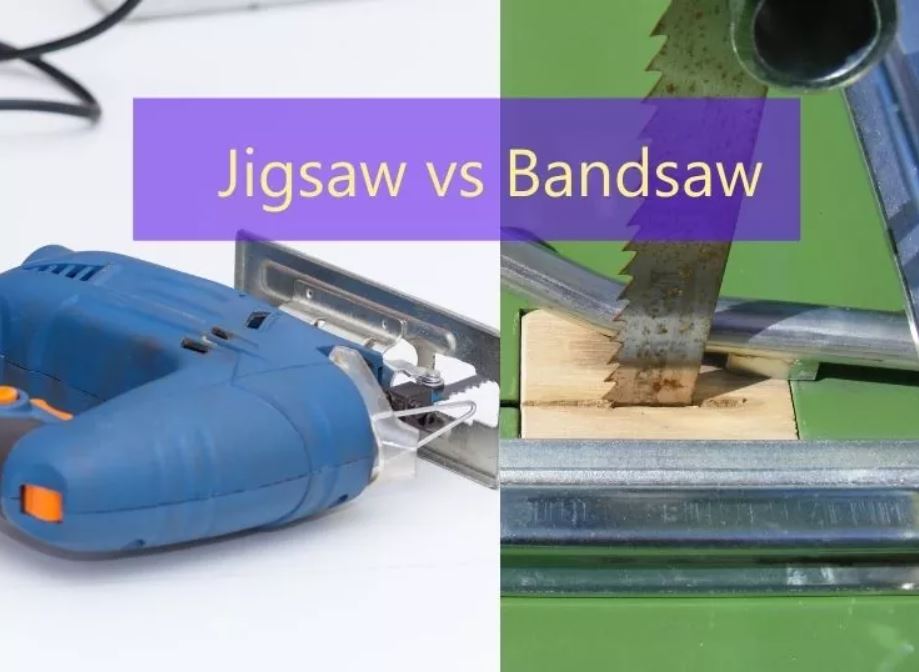
Photo credit: reviewconsults.com
People Also Ask
Even after reading the above review, you might still have some unanswered questions. That's expected because you might want to know more about these two powerful tools.
Let’s answer some common questions that most buyers ask before deciding which tool to buy. We hope the answers will help you make an informed decision.
Can You Use a Jigsaw Like a Bandsaw?
Even though jigsaws and bandsaws share some functionality, these two tools aren’t the same. Each has specific actions for which it is designed. While bandsaws perform better in re-sawing works, jigsaws are better for making curved, inside, and circular cuts.
Simply put, jigsaws can’t be used as bandsaws because there are some functions of bandsaws they can’t perform. You can’t entirely interchange the two tools.
What Does Bandsaw Resaw Mean?
Bandsaw resawing means slicing timber to get thinner sections. Resawing is the process used to obtain lumber from logs and in making veneers. Resawing can help you save money.
For example, when handling expensive exotic woods, you'd not want to waste them by using their full thickness. Resawing them will help you get thinner pieces that are less costly.
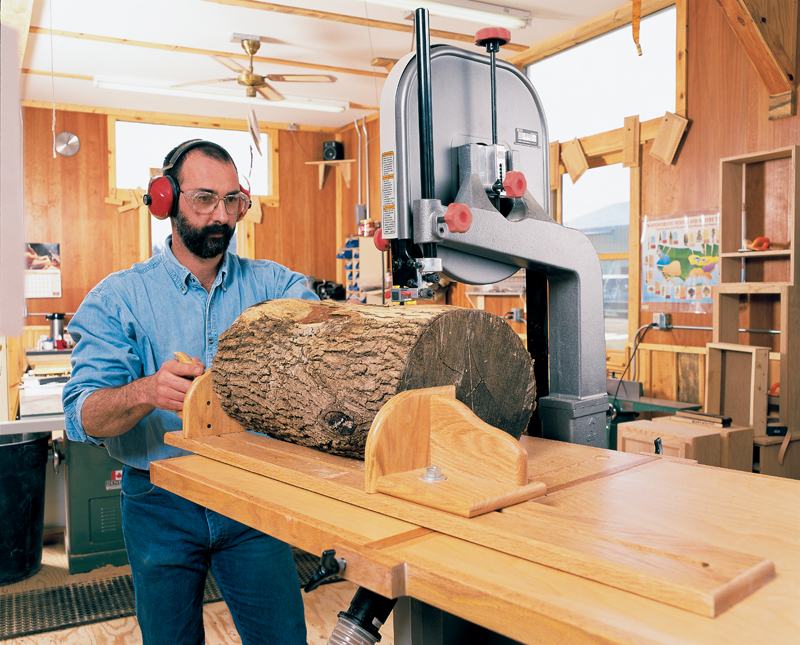
Photo credit: popularwoodworking.com
Where Should You Stand When Cutting With a Bandsaw?
Using a bandsaw requires some special training to ensure your safety and the safety of those around you. When operating a bandsaw, stand on one side.
As you push the material across, make sure you keep your fingers away from the blade. If you are cutting a large piece of wood, ask someone to help you tail it off.
What Personal Protective Equipment Should You Wear While Using a Bandsaw?
The personal protective equipment you can wear while using a bandsaw includes goggles or safety glasses to protect your eyes, hearing protection for your ears, and protective footwear.
You can also wear a face shield to protect your whole face. Gloves come in handy too.
